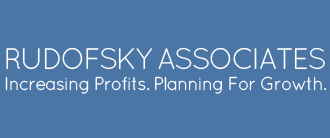LinkedIn Taking the Long Road to Riches
Just before writing this blog posting I noticed an email from LinkedIn with small thumbnail photos of my 40 LinkedIn contacts that changed jobs in 2010, described by “Fortune” as “the best networking email that I will receive all year.” I totally agree with Fortune magazine’s assessment, and it really underscores to me the value of being a long-term LinkedIn user.
All of this technology has a price tag, and now that LinkedIn has announced its intentions to sell its stock to the public for the first time, through their S-1 Report, which is available on EDGAR, the U.S. Government repository of public company financial filings.
For the first nine months of 2010, LinkedIn had revenue of $161 million, with 73% of this coming from its Hiring Solutions and Marketing Solutions lines of business, as the vast majority of its 90 million individual members (including me) continued to take advantage of LinkedIn’s free basic service. Even with $161 million of revenue, LinkedIn had slightly negative free cash flow over this nine month period, as its $37 million of Cash Flow from Operations was offset by $40 million they invested back in the business, including investment to build out their data centers, technology hardware to support growth, and software to support website functionality development, which would include, I suppose, that email mentioned above.
To LinkedIn’s credit, they are flagging that their future growth will require substantial additional investment, and even have the courage to say in their S-1 that they do not expect to be profitable, on a GAAP basis, in 2011. Adding one new member every second does not come cheap! LinkedIn has a good lead in the professional networking space, but they may attract considerable competition from Facebook, Google, Microsoft, Twitter and others, all of which explains why they are going to the public markets for fresh equity investment, even thought they had nearly $90 million of cash on hand as of Sept. 30, 2010 – roughly equivalent to the amount of private investment they have taken in over the last few years.
By way of comparison to LinkedIn, Google was a cash cow even before their stock went public. For example, in 2001, Google has revenue of $86 million and Cash Flow from Operations of $31 million, of which only $13 million had to be invested in property and equipment to support the business, with the balance invested in “short term investments.” And Google maintained its positive cash flow characteristics even as its revenue exploded to $439 million in 2002 and exceeded $1.4 billion in 2003.
While LinkedIn is probably not the next Google from an investment standpoint, I do love being a member, and its management team appears to be the bringing the same degree of thoughtfulness to stewardship of the company, as they have in the past to evolution of LinkedIn’s functionality.


